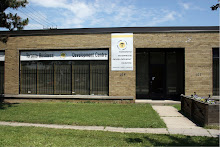Differentiating yourself from the competition is often easier to say than do. Life is like that - doing is tougher than saying.
My own mantra is to do what my competition does not like to do. But what does that really mean and how do I find out what they do not like to do in the first place?
One place to start is with your existing customers. The fact they are buying from you indicates you have already established a competitive advantage. Your task is to determine exactly what that advantage is. In most cases the behaviour you demonstrate is transferable to your prospects. Your approach may need to be tweaked depending on the personalities involved, but the underlying behaviours will likely be consistent.
What has worked for me in the past is to be up front with the customer and ask them if they would be willing to evaluate your performance and how they measure it. This is part of gaining valuable knowledge on their individual needs. Based on their response you may be able to develop insights to how your competition measures up without actually asking the question directly.
Analyze the information you gather - ask yourself what it is telling you, read between the lines. Sometimes the answer lies in what is not said. The insights gained are the true value of the exercise and will help you understand how you stand out from the crowd.
You may be surprised that it is several little things that you do that add up to a big advantage. Whatever it happens to be, you are delighting your customer.
It may be that you return calls promptly, or send regular industry information that is engaging. Perhaps they do not hear from you frequently, but very regularly and when you do communicate it is always worthwhile.
Analyze the reasons for your successes and translate them to your new prospects. This will help you to differentiate yourself and stay ahead of the competition.
Good selling,
Richard










